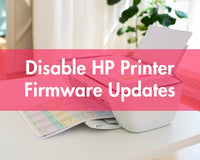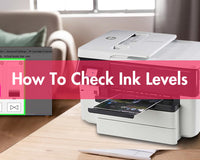If you need to send thank-you cards to your client, what will you do? Maybe you will write every letter by hand. Maybe you will prepare a template and change the name of each letter. No matter which way you choose, it is still a huge task! You need to spend a lot of time and energy to do this kind of boring work. Today, I will introduce you to a magic tool called variable data printing. With its help, you will finish your task in just a few seconds. Then, let me explain to you about variable data printing from the following aspects:
Table of Contents
- The Basic Concepts of Variable Data Printing
- How Does Variable Data Printing Work?
- How Can We Use Variable Data Printing?
- Where Can We Use Variable Data Printing?
- Why Should We Use Variable Data Printing
- Current Challenges about Variable Data Printing
The Basic Concepts of Variable Data Printing
In traditional printing, 1000 leaflets are the same. But in variable data printing, every page could have different contents for different customers. Variable data printing is an advanced printing method based on digital printing technology and a database system. Variable data printing can automatically change parts of the content in each printed page according to information in the database. In other words, variable data printing could change the text, image, QC codes, or even the entire layout in a batch of printings according to the customer’s name, address, goods, and other information.
From business to our daily life, variable data printing is everywhere to meet. For example, personalized direct mails, tickets, certificates, product packaging and labels, bank bills, water/electricity bills, tax bills, and more. Variable data printing shows a smart printing method and makes our lives more convenient.
How Does Variable Data Printing Work?
In short, with the help of variable data printing, the database and template work together. In this way, the printer can modify information while working. Now, let me explain the process step by step.
1. You Need to Design a Printing Template
It may be a letter, a flyer, or a label. There are two kinds of content in the template. One is the fixed content, like brand, logo, background, company address, and so on. The other is the variable content, like name, number, discount code, and more. These variable fields are like blank spaces in a form. They will be automatically filled with different content when printing. For example, you design a thank-you card that says, "Dear [customer name], thank you for your support!" Here [customer name] is a variable field.
2. You Need to Prepare a Data Table that Has All the Variable Information
This table is usually an Excel or CSV file. There are also two types of content in the table. Each row shows a customer or a product. Each column matches a variable field.
3. You Need to Use Professional Software
It will link data fields to variable blank spaces in the template. For example, the [Name] field in the template is linked to the "Name" column in the data table. This way, when printing, the system knows to print Tom’s name on the first sheet and Bob’s name on the second sheet. Everything will be done automatically, without anyone needing to change it by hand.
4. You Need to Start the Digital Printer for Output
Once the template and database are connected, the whole file can be sent to the printer. During the printing process, the printer will automatically read each row in the data table and fill in the matching content in the right position on the template. This makes it possible to print different pages in one batch.
How Can We Use Variable Data Printing?
Variable data printing makes our work easier and saves us more energy and time. The whole process is also easy to do. All you need are the following things:
First, you need to create a template by using professional typesetting software like Adobe InDesign or Illustrator. In this template, the fixed contents like brand, logo, or background are the same. Then you need to leave space in the template for variable content, such as name, number, or discount code.

Then, you need to prepare variable data by using an Excel file or a CSV file. These data usually come from a customer database, CRM system, or marketing list. Each row shows a customer or a product. Each column matches a variable field. The column headers must match the fields in the template exactly. It is best not to have blank fields or special characters in the file.

Next, you need to connect the templates and the data by using variable data printing plug-ins or software, such as HP SmartStream Designer and XMPie.
Last, you could print pages on a digital printer.

Where Can We Use Variable Data Printing?
If you need to print similar pages with a few different contents, variable data printing will come in handy! There are so many places we can use it: personalized email, tickets, product labels, and more. Then let me tell you in detail about applicable scenarios.
1. Personalized Direct Mail
Variable data printing is most commonly used for personalized email, for example, postcards, flyers, thank-you letters, and more. In these pages, most of the content is the same. But each customer's name, address, and exclusive promotion code is different.
2. Tickets, Certificates, and Documents
Some documents marking personal information also commonly use variable data printing. They include event tickets, exhibition passes, graduation certificates, and so on. In these pages, the relevant person’s name, number, set information, OR code is shown.
3. Product Packaging and Labels
During the production, variable data printing is also often required. Workers may use variable data printing to mark product information. From this information, workers could know the product model, batch, size, row material, and more.
4. Bills and Notices
In our daily life, variable data printing is also everywhere to be seen. You could find it in bank bills, water/electricity bills, tax bills, and membership reminders.
5. E-commerce and Logistics Labels
During transport and logistics, variable data printing is also powerful and useful. They help a lot by printing shipping labels, delivery bills, and warehouse sorting tags. From these, workers could know when and where the goods are delivered. Also, workers could track the goods anytime.
Why Should We Use Variable Data Printing?
1. Personalized Marketing – Easier to Impress Customers
With the help of variable data printing, every email or letter could be customized for each client. Perhaps you have been sending letters like this to your customers for a long time. In the letter, you address them as "Dear Customer" and use similar words to promote the same product. But now, you could change the name, address, special discount code, product, or even the greeting style for each person. This will make your email more thoughtful and sincere. Customers are more likely to pay more attention to your email and trust you more.
2. High Efficiency – Great for Large Personalized Work
Traditional personalized printing requires us to modify information manually. It costs a lot of time and is easy to make mistakes. But variable data printing prints pages fully by the printer and the computer. We just design a template once, prepare a data table, and connect the two. Then you press the button and create thousands of different pages quickly. You needn’t start from scratch every time.
3. Super Flexible – Easy to Update Anytime
Variable data printing is based on databases and digital printers, so you can update things easily. If you want to change a name or update an address, just edit your Excel sheet. Then the pages will be updated accordingly. How simple and fast!
4. Works Well with Other Systems – Supports Automation
Variable data printing can connect to your online shop, CRM, or order system.
This is to say, variable data printing will help you like an assistant. When a customer places an order, variable data printing prints a shipping label right away. When a member’s points change, variable data printing prints the custom bill. Everything runs on computers. It saves time and reduces mistakes.
Current Challenges about Variable Data Printing
Variable data printing is powerful and useful. But if you think you can exploit it without thinking twice, you will make big mistakes. We need to have a good understanding of this magic tool so that we can control it. Only in this way can it serve us better. Then I will tell you a few things about this tool.
1. Bad Data Causes Bad Printing Results
Variable data printing relies on good data. If the data is messy, the final printed page will also have errors. For example, if some names are missing or misspelled, the letters will be printed incorrectly. If the address is formatted differently, the system may get confused and print the wrong layout. Therefore, the data must be clean, correct, and in good order.
2. Setup Takes Time and Knowledge
Variable data printing is more complicated than regular printing. You need to design a template, connect the template with the data file, and test it before printing. This process takes more time at the beginning. If there is something wrong with any link, the whole batch of prints may be ruined.
In addition, the relevant personnel need to understand the design and data tools. This may be difficult for beginners or small teams. They may need to spend time learning or hire external help.
3. It Costs a Lot at the Beginning
Variable data printing can save money in the long run. But at the beginning, you need to buy better printers, train your team, and purchase special software. These will cost a lot of money.
4. It Can Cause Problems with Data Privacy and Safety
When variable data printing works, it needs to input customer information like names, addresses, and order details. This information is private. If these data are leaked, it will cause huge trouble. The customer will not trust your company. You even break the law in some countries. So, we businesses must build a secure system to protect the data from start to finish.
Conclusion
Variable data printing isn’t just a tool. It shows a smart way to print. From business to our daily life, there are so many places we can see it. It brings so many benefits. It saves time, cuts costs, avoids errors, and makes messages more special for each customer.
But if we want to use it well, we must have a good understanding of it and prepare more. This means that you need to have correct data, learn how to use tools, and protect customer information. It takes some time and effort. But this is a one-time thing. Once everything is prepared and tested, we will get endless benefits from it.












